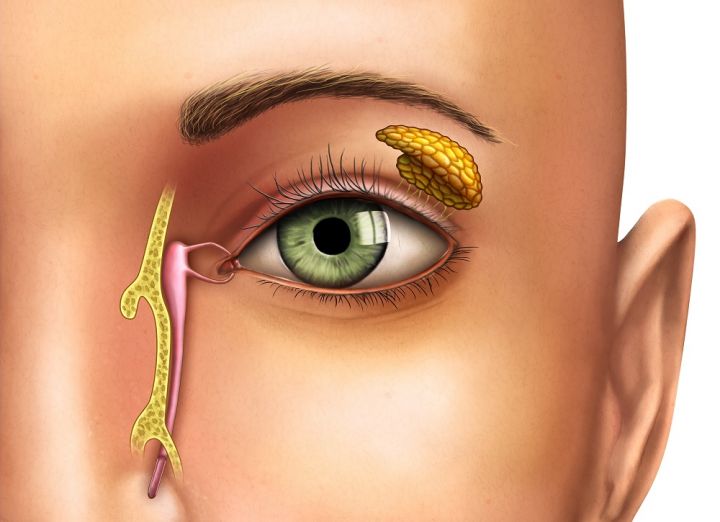Dry eye or dry eyes
The tears come mainly from the lacrimal gland located in the roof of the eye socket on the temples side. This gland reacts to irritating stimuli, such as smoke, wind, dust, onions, etc. Accessory lacrimal glands are responsible for the basic secretion of tears and the maintenance of continual lubrication of the eyes.
Tears accumulate along the lower eyelids and are drained to the inner corner of the lower and upper eyelids, through the lacrimal ducts, into the lacrimal sacs. From there, tears are carried to the nose and throat. That's why our nose becomes blocked when the eyes cry. This is also the reason why you can smell or taste a liquid when eye drops are installed in our eyes.

The problems of tears
The problems of insufficient tear are the result of dysfunction of one of the two glands mentioned above. In most cases, lacrimal insufficiency is due to deficiency of basic accessory glands.
The insufficiency of the function of one or the other of the glands appears during various conditions, the most common being the keratoconjunctivitis sicca (kerato = cornea of the eye; conjunctivitis = inflammation of the conjunctiva of the eye; sicca = dry) or dry.
The main symptoms are:
- burning sensation in the eyes
- red eyes
- photophobia (sensitivity to light)
- blurred vision
- a lot of secretions or mucus in the eyes
Problems associated with tears
Many individuals with "dry eyes" also have chronic inflammation and / or eyelid infection. The edges of the eyelids are red and often seborrhea (dandruff) is present. Commonly, an infection caused by staphylococcal bacteria is found. If this is the case, simple antibiotics will be suggested.
Contact lens wearers will feel discomfort if they have dry eyes. In addition, the quality of the air in the living environment is an important factor for these individuals. Some lens wearers are unable to wear them at work.
In addition, the nature of the work tasks will also affect these individuals. It is known, for example, that after 3 or 4 hours of work on a computer, the blink rate can be halved!
This is not without harm to individuals who already have a condition of tear insufficiency...
Treatment of dry eyes
The basic treatment for lacrimal insufficiency is the use of artificial tears. These drops are used to replace or increase the lubrication of the eyes. Your optometrist can help you choose the most appropriate treatment based on symptoms and your medical condition.
(Source : Association des Optométristes du Québec)
